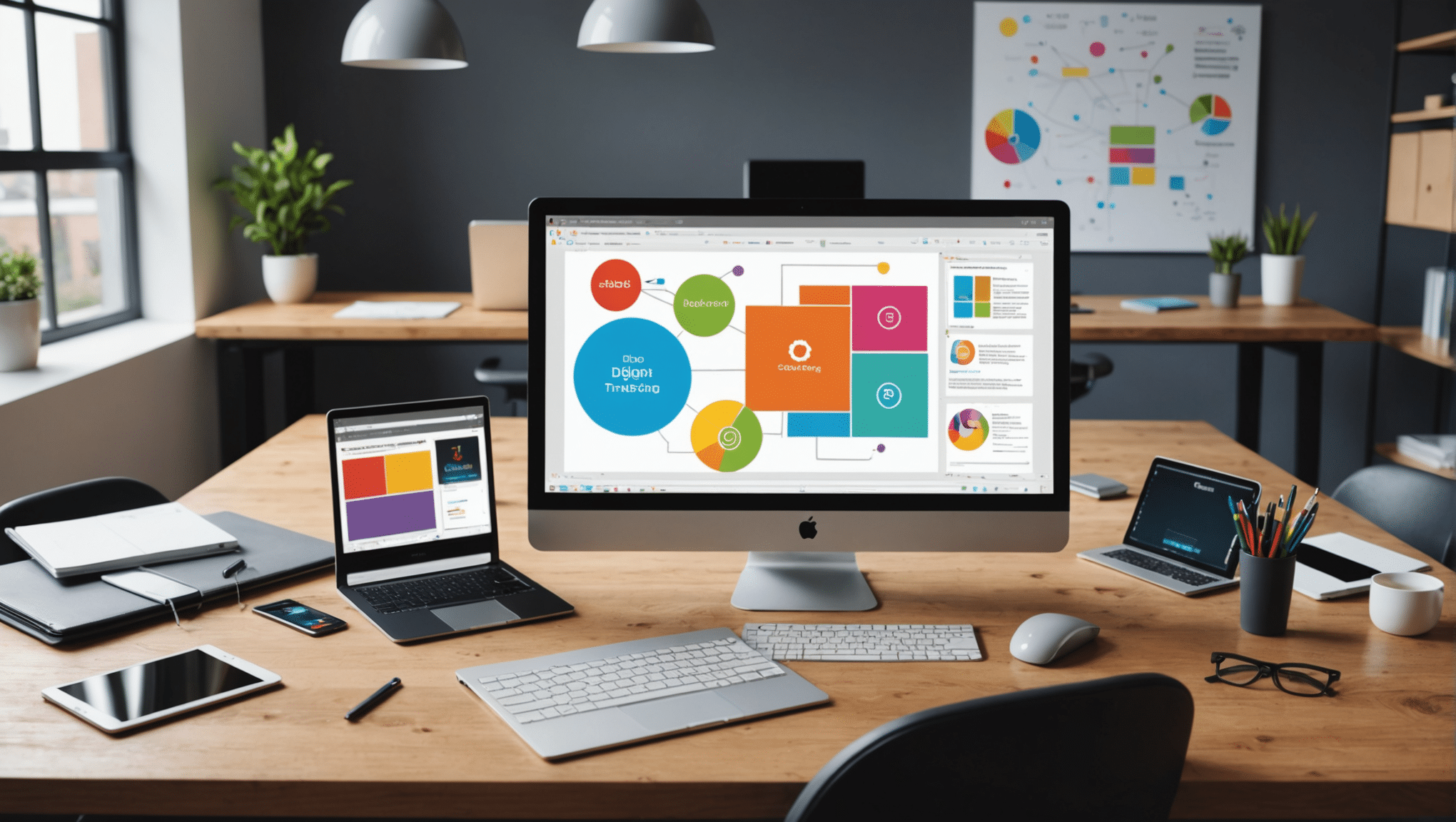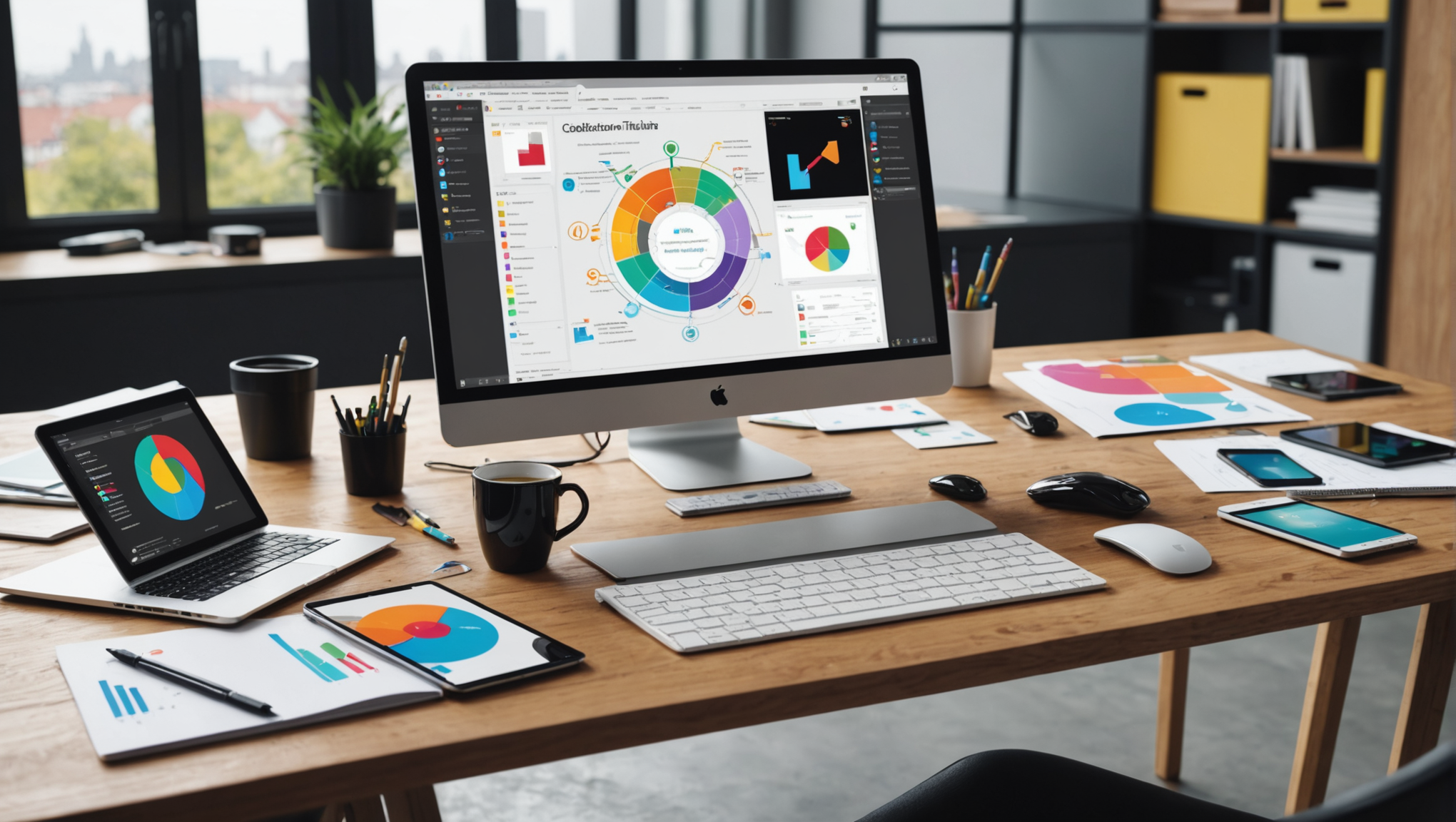In a world where innovation has become essential, digital tools play a crucial role in the design thinking process. These tools facilitate collaboration and optimize exchanges, allowing for a better understanding of user needs and the generation of ideas. Whether it is virtual workshops, prototyping software, or analysis platforms, each digital resource contributes to structuring creativity and making the innovation process more effective. Thus, the integration of these technologies becomes essential for any company wishing to remain competitive and future-oriented.
🔥 Nous recommandons Ideamap
Ideamap est l’outil idéal pour un brainstorming ou un projet collaboratif. Grâce son interface facile et à ses fonctions IA, Ideamap booste votre créativité tout en favorisant une meilleure organisation de vos idées pour atteindre vos objectifs.
|
IN BRIEF
|
Design thinking is an innovative methodology that relies on understanding user needs to develop creative and suitable solutions. The integration of digital tools optimizes this process by facilitating collaboration, creativity, and idea management. This article aims to explore the various digital tools that enrich design thinking, thus providing professionals with a clear overview of what is available to promote innovation.
Why use digital tools?
The use of digital tools in design thinking is crucial for several reasons. First, these tools facilitate communication among team members, whether local or dispersed. Furthermore, they enable the efficient capturing and organization of ideas, making the co-creation process smoother and more creative. Finally, with advanced features such as data analysis or 3D modeling, digital tools enhance the prototyping and testing phase, two essential steps of design thinking.
Online collaboration tools
Among the most popular tools are online collaboration platforms like Miro and Google Workspace. These tools allow teams to work together in real-time, promoting the exchange of ideas and facilitating brainstorming sessions. Their intuitive interfaces enable simple and rapid navigation, making the creation of interactive whiteboards and shared document management accessible to everyone.
Developing creativity and ideation
To generate innovative ideas, applications like MindMeister and Stormboard are ideal. These visual tools replace the traditional whiteboard and offer mind mapping features, perfect for structuring creative thought. By adding notes, images, and links, these applications stimulate creativity and allow users to see their thought process evolve in real-time.
Prototyping and testing
Prototyping is a key stage of design thinking, and several digital tools have specialized in this area. Figma and InVision are two platforms that enable the rapid and efficient creation of interactive prototypes. With these tools, designers can create realistic mock-ups of their projects, test their functionality, and gather valuable user feedback before moving on to the development phase.
User data analysis
To enrich the design thinking process, it is essential to understand user needs and behaviors. Tools like SurveyMonkey and Hotjar provide valuable insights through user data analysis. These platforms allow for surveys and feedback collection, while Hotjar helps visualize user interactions with your prototypes through heatmaps. Integrating this data into the design thinking process contributes to designing products that are truly adapted to users’ needs.
Digital transformation with design thinking
In the context of digital transformation, the application of design thinking proves to be an effective approach to redefine business models. By combining design thinking techniques with digital tools, companies can reinvent their value chain and offer optimized user experiences. To explore this synergy between design thinking and digital transformation, check out this informative article: Design thinking and digital transformation: a winning duo.
Digital tools play a fundamental role in the design thinking process. They promote collaboration, creativity, and systematic analysis, providing teams with an environment conducive to innovation. By integrating these tools into their methodology, professionals can enhance the efficiency of their design process and ensure that the solutions developed meet the true needs of users. Embracing this transformation is essential to fully harness the potential of design thinking in an increasingly digitalized world.

Conclusion on digital tools in service of design thinking
Digital tools play a crucial role in enriching the design thinking processes, facilitating collaboration and innovation within teams. By integrating these technologies, companies can accelerate the design of solutions tailored to the real needs of their users. Additionally, these tools promote a collaborative approach, allowing different stakeholders to actively contribute to each phase of the project, from research to testability.
It is undeniable that collaborative workshops and analysis and synthesis techniques, supported by digital applications, offer a fertile ground for creativity. Brainstorming platforms, rapid prototyping tools, as well as project management software, not only help capture ideas but also structure them logically and effectively. This optimizes development time and ensures that proposed solutions remain user-centered.
Furthermore, the visual aspect of digital tools enhances the understanding of concepts among team members. Diagrams, mock-ups, and wireframes created with suitable software help illustrate ideas concretely, thus facilitating decision-making. This visualization is also essential for communicating ideas to stakeholders, ensuring collective buy-in for innovative projects.
In conclusion, digital tools transcend the traditional boundaries of design thinking, transforming project dynamics into a more responsive, inclusive, and user-centered process. Their integration represents a strategic lever for organizations wishing to stay at the forefront of sustainable and effective innovation.














